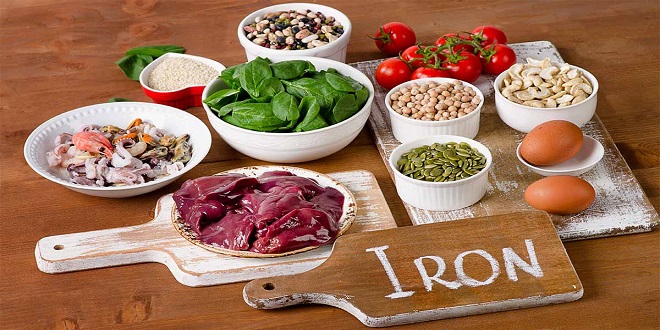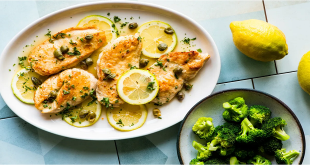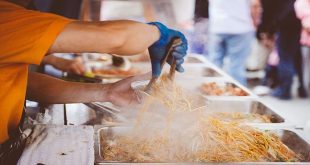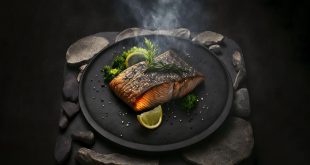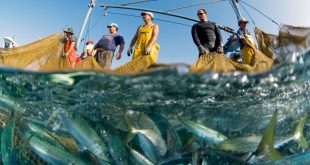Iron is an essential mineral that plays a crucial role in maintaining good health. It is a key component of hemoglobin, a protein in red blood cells that transports oxygen from the lungs to the rest of the body. Iron also helps produce ATP (adenosine triphosphate), the body’s primary energy source, and supports the immune system.
Despite its importance, iron deficiency is one of the most common nutrient deficiencies worldwide, affecting an estimated 1.62 billion people globally. In the United States, iron deficiency affects approximately 10% of women of childbearing age and 5% of men.
In this article, we will discuss best foods that are high in iron. We will also provide tips on how to increase iron absorption and information on iron requirements for different populations. By the end of this article, readers will have a better understanding of how to maintain optimal iron levels and support their overall health.
Why is Iron Important?
Iron is a critical nutrient for maintaining good health. It is an essential component of hemoglobin, a protein in red blood cells that transports oxygen from the lungs to the rest of the body. Without enough iron, the body cannot produce enough hemoglobin, leading to a condition known as iron deficiency anemia.
Iron also plays a key role in the production of ATP, the body’s primary energy source. It helps to transport electrons within cells and is involved in many metabolic processes, including the metabolism of proteins and carbohydrates.
Iron is also important for immune function. It helps to produce white blood cells, which are essential for fighting off infections and diseases.
Additionally, iron is important for brain function. It helps to support cognitive development in infants and children and may help to prevent cognitive decline in older adults.
Iron Requirements
The amount of iron a person needs varies depending on age, gender, and other factors. Here are the recommended daily iron intakes for different groups:
- Infants and toddlers: Infants aged 0-6 months need 0.27 mg of iron per day, while those aged 7-12 months need 11 mg per day. Toddlers aged 1-3 years need 7 mg of iron per day.
- Children and adolescents: Children aged 4-8 years need 10 mg of iron per day, while those aged 9-13 years need 8 mg per day. Adolescent boys aged 14-18 years need 11 mg of iron per day, while adolescent girls aged 14-18 years need 15 mg per day.
- Men and postmenopausal women: Men and postmenopausal women need 8 mg of iron per day.
- Women of childbearing age: Women of childbearing age need more iron than men and postmenopausal women due to blood loss during menstruation. Women aged 19-50 years need 18 mg of iron per day.
It is important to note that some groups may require higher iron intakes due to certain health conditions or pregnancy. Your healthcare provider or a registered dietitian can help determine your individual iron needs.
Looking for menu prices that are affordable and competitive? Check out Getmenuprice.com
Best Foods That Are High in Iron
Here are some of the best foods that are high in iron and can help you meet your daily iron requirements:
- Red Meat
Red meat is one of the most significant sources of dietary iron. It contains a type of iron called heme iron, which is more easily absorbed by the body than non-heme iron. Beef, lamb, and pork are some of the red meats that are high in iron. A 100-gram serving of beef contains around 2.6 mg of iron.
- Organ Meats
Organ meats such as liver and kidneys are also an excellent source of dietary iron. In fact, liver is considered one of the most nutrient-dense foods and is a rich source of several essential vitamins and minerals, including iron. A 100-gram serving of beef liver contains around 6.5 mg of iron.
- Poultry
Poultry such as chicken and turkey are good sources of dietary iron. The iron content in poultry is mostly concentrated in the dark meat, such as the thighs and drumsticks. A 100-gram serving of chicken contains around 0.9 mg of iron.
- Seafood
Seafood such as oysters, clams, and shrimp are good sources of dietary iron. Oysters, in particular, are considered one of the best sources of dietary iron, with a 100-gram serving containing around 7.4 mg of iron. However, it’s important to note that the iron content in seafood can vary depending on the type and preparation method.
- Beans and Legumes
Beans and legumes are an excellent plant-based source of dietary iron. They are also a good source of protein and fiber. Lentils, chickpeas, kidney beans, and black beans are some of the legumes that are high in iron. A half-cup serving of cooked lentils contains around 3.3 mg of iron.
- Nuts and Seeds
Nuts and seeds are another plant-based source of dietary iron. Pumpkin seeds, sesame seeds, and cashews are some of the nuts and seeds that are high in iron. A 100-gram serving of pumpkin seeds contains around 8.8 mg of iron.
- Leafy Greens
Leafy greens such as spinach, kale, and Swiss chard are an excellent source of non-heme iron. While the iron content in leafy greens is not as high as in animal-based foods, they are still a good source of dietary iron. A half-cup serving of cooked spinach contains around 3.2 mg of iron.
- Fortified Foods
Fortified foods such as breakfast cereals, bread, and pasta are another good source of dietary iron. These foods are fortified with iron to help people meet their daily iron requirements. However, it’s important to choose fortified foods that are low in added sugars and other unhealthy ingredients.
- Dried Fruits
Dried fruits such as apricots, raisins, and figs are another good plant-based source of dietary iron. A half-cup serving of dried apricots contains around 2.7 mg of iron.
- Tofu
Tofu is a great option for vegetarians and vegans looking to increase their iron intake. It is also a versatile ingredient that can be used in a variety of dishes.
Incorporating these iron-rich foods into your diet can help you meet your daily iron requirements. It is important to note that the amount of iron your body absorbs can be affected by several factors such as the presence of other nutrients in your diet, your body’s ability to absorb iron, and your overall health.
How to Increase Iron Absorption
While it is important to consume a diet rich in iron, it is also important to ensure that the body is absorbing that iron effectively. Here are some tips on how to increase iron absorption:
- Pair iron-rich foods with vitamin C-rich foods: Consuming vitamin C-rich foods, such as citrus fruits, tomatoes, and bell peppers, can enhance the absorption of non-heme iron. For example, pairing a spinach salad with sliced strawberries or adding bell peppers to a lentil soup can increase the absorption of the iron in those foods.
- Avoid consuming iron inhibitors with iron-rich foods: Certain compounds, such as phytates and polyphenols, can inhibit the absorption of iron. Avoid consuming foods high in these compounds, such as coffee, tea, and whole grains, with iron-rich foods. If you must consume these foods, wait at least two hours after consuming an iron-rich meal.
- Cook with cast iron pans: Cooking with cast iron pans can increase the amount of iron in food. The iron from the pan leaches into the food, increasing the iron content of the meal.
- Consume iron supplements with food: If you are taking an iron supplement, it is important to take it with food. Iron supplements can cause stomach upset, and taking them with food can help to alleviate this. Additionally, consuming iron supplements with food can increase the absorption of the iron.
- Avoid consuming calcium supplements with iron supplements: Calcium can inhibit the absorption of iron. If you are taking both calcium and iron supplements, it is best to take them at separate times.
By following these tips, you can help to ensure that your body is absorbing the iron it needs to maintain good health. If you are concerned about your iron intake or absorption, talk to your healthcare provider or a registered dietitian for personalized recommendations.
Conclusion
In conclusion, iron is an essential nutrient that plays a crucial role in many bodily functions, including the production of hemoglobin and the transportation of oxygen throughout the body. Consuming a diet rich in iron, such as meat, seafood, beans, and leafy green vegetables, is important to meet daily iron requirements.
Additionally, taking steps to increase iron absorption, such as pairing iron-rich foods with vitamin C-rich foods and cooking with cast iron pans, can help to ensure that the body is absorbing the iron it needs.
If you are concerned about your iron intake or absorption, talk to your healthcare provider or a registered dietitian for personalized recommendations. By taking these steps, you can help to maintain good health and prevent iron deficiency.
 Pagalmusiq.com Popular News Update Website | Pagalmusiq.com
Pagalmusiq.com Popular News Update Website | Pagalmusiq.com
